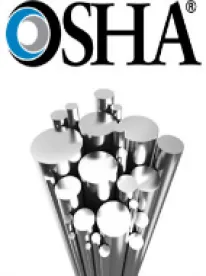I had the opportunity to hear Dr. David Michaels, Ph.D., the Assistant Secretary of Labor for OSHA, speak on March 10, 2016, about the state of Occupational Safety & Health in the United States. It was not just a “normal” speech, as it was his last in that position before the American Bar Association Labor & Employment Law Section Committee on Occupational Safety & Health. In attendance were lawyers devoted to representing employers like me, lawyers from unions, lawyers from the Solicitor’s Offices around the Country who represent OSHA, OSHA officials from Washington, D.C., Commissioners from the independent Occupational Safety & Health Review Commission (OSHRC), and the Chief Judge of OSHRC, and various Company and Industry representatives, including the U.S. Chamber of Commerce, and various employee rights groups. Our assemblage is unique in that it contains all constituencies in the OSHA world.
Dr. Michaels began by pointing out that 4500 workers per year/ 13 per day still die on the job. While that is an improvement from 45 years ago when it was 37 per day, we still must move toward zero. He alleged that there is a 40-70% under-reporting of injuries and illnesses. He pointed out that when 12 fatalities occur due to airbags, that receives lots of press, but the 4500 killed workers receive very little press. He asserted that we have reached a plateau regarding improvement in reducing injuries and illnesses. He made many other points in his speech.
As I was listening, I reflected on the last 7 plus years in our OSHA Practice. While, until recently, there have been few new standards, it is the aggressive interpretation of the existing Standards (OSHA Regulations) that has been the hallmark of this period of time. Dr. Michaels is an industrial hygienist. He has advocated moving from a strict Standard-based system to a requirement that all employers must assess all hazards, and then diagnose and repair them. The talk about a Standard requiring every employer to have an “injury and illness prevention plan,” “I2P2,” has given way to requiring employers to have a “health and safety management plan” as an “enhancement” in settlements. Increased emphasis on the use of the non-Standard General Duty Clause has similarly been used in citing employers to cover hazards for which there is no Standard.
People, like plant managers and construction superintendents, who actually have to run plants and build projects, were typically trained in the older Standard-based environment, in which one followed the Standards that were written down and of which one had prior notice. Without the Standards-based environment, employers are subjected to a murky world in which they are second-guessed in the event of an injury, and in which “knowledge” of a hazard is imputed to an employer just because there is a so-called “consensus standard” from a so-called “industry organization,” which often is composed primarily of representatives of vendors and very large companies who have the opportunity to dream of an ideal world in which there are no injuries or illnesses, and then to put their dreams into so-called “consensus standards” to which very few people or companies have actually consented.
Those so-called “consensus standards,” without adoption by OSHA through notice and comment rulemaking, are then used by OSHA to attempt to cite employers, to seek to establish industry “knowledge,” and definitely to attempt to establish the feasibility of abatement measures. With these so-called “industry organizations” working constantly to issue new so-called “consensus standards,” or update old ones, and derive revenue therefrom, OSHA has less and less of a need to issue Standards. Moreover, the so-called “consensus standards” then form a basis for the “occupational safety and health management plan” or the “I2P2” plans that OSHA wants to impose on employers. The hazards identified in the consensus standards are then imputed to employers generally and by industry. In the meantime, small employers, startups, etc., have a higher wall to climb when it comes to compliance and size becomes very important to have enough mass to support safety professionals. Or, as OSHA frequently does, the small employer is required to hire a “consultant,” to not only tell the employer how to operate its business, but to report to OSHA its compliance.
Back to the first point, then, there will have to be significant education of our industry and construction employer base to bring them into this assessment-diagnosis-repair/abate safety and health world. Our engineering schools will have to require safety and health issues in their curricula. Middle managers and front line supervisors will have to be re-educated about safety and health. Even OSHA’s own 10 and 30 hour General Industry and Construction courses will have to be re-vamped to take into account the new environment. Acceptance will be a mountain to climb.
All of us want all workers to return home safely after a day’s work. Sometimes we must state the facts, neither complaining nor applauding, so that all of us can examine the current state of affairs. The trends described above are unmistakable and undeniable




 />i
/>i

